Who doesn’t love the great outdoors? The thought of getting away from the hectic stress of our runaway schedules for some peace, quiet, and convening with nature is tempting enough to make anyone want to throw away their phones for the weekend. But before you do, keep in mind that the wilderness claims many lives every year. People regularly get lost in the woods, especially when ill-prepared for their hiking or camping adventures. Planning well and taking some time to educate yourself on what Mother Nature has in store can go far. In fact, learning tips about navigating their terrain and weather will help you not be one of those people.
Not only is it essential to plan, but there are crucial steps you can follow if you get lost in the woods. Whether hiking or camping, things take a turn for the worst. You can remember these survival tips. Following these steps will help ensure your own safety. Furthermore, you can increase your chances of being found if you get lost on a camping trip or hiking excursion.
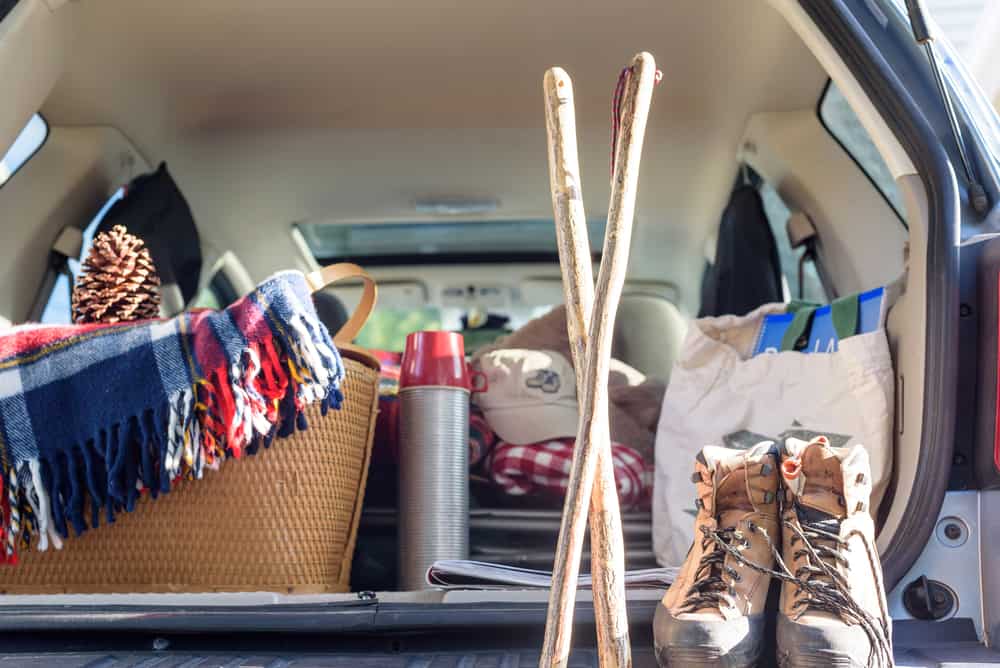
23. When you go hiking or camping, it is essential to plan ahead.
Yes, we are like a worried mother repeating this critical yet straightforward phrase over again. When you are hiking or camping, make sure that you are planning. It doesn’t matter how well you know the area or how confident you are about your own survival skills. You do not know if the weather will suddenly turn. Besides, you might see a bear or other large animal. You don’t know if you or someone in your group might get sick. Any great outdoors person knows that the better you plan, the fewer emergencies you will have. Not planning well is a sign of cockiness and can cause you and those with you to get into a situation that you cannot get out of.
If you are going camping and plan on only eating what you can forage, be it fish or wild plants, great. However, pack an emergency supply of food just in case things go south. If you are in an area known for bears or other large (and dangerous) animals, make sure you pack the food securely to avoid unwanted guests. You may want to use a thick cooler and wrap it securely in blankets so that animals cannot detect the smell. If you are bringing your dog with you, make sure that you have some food for him, as well. Dogs can be excellent survival companions, but they have the exact basic needs as their owners: food, water, and shelter.

22. Always dress for the occasion.
Wearing proper outdoor gear is key. Just because a pair of boots look like they have a thick tread on the bottom or some tennis shoes are a good brand does not make them fit for a long hike. A hoodie from the department store may be cute but not sufficient for time out in the woods. Before heading out, dress in warm layers so that you can add or remove clothing as necessary. Make sure that at least one of those layers is waterproof, and make sure that your shoes are waterproof, as well. Wet feet are not just uncomfortable; they are a breeding ground for disease and can succumb to the cold faster than any other part of your body.
Make sure that you are wearing high-quality socks that will not cause your shoes to give you blisters and that, preferably, are waterproof. Also, bring an extra pair of socks in case the ones that you are wearing get wet. Extra socks don’t add much weight or take up much space, but they can be a real lifesaver, especially if the weather turns cold and rainy (or snowy). You should be wearing sturdy hiking boots that support your ankles so that you are less prone to injure them. Trail-running shoes can also work, but avoid wearing plain tennis shoes, no matter the brand.
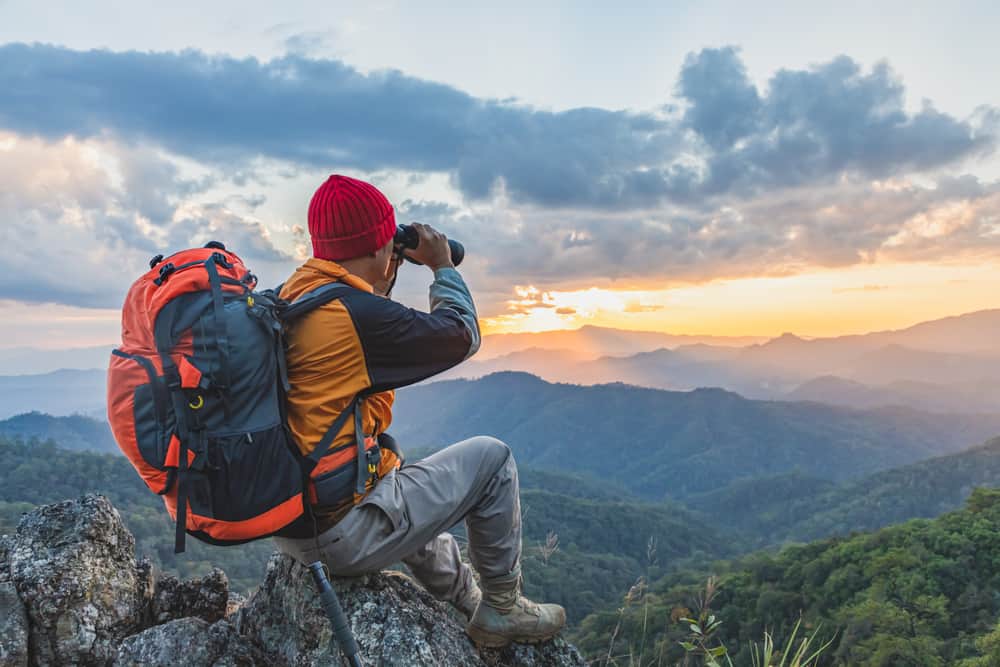
21. Before you go camping or hiking, tell somewhere your whereabouts.
The first rule of the outdoors is never to go out alone. People regularly die or experience severe injuries that they could avoid if they had been with someone else. You may have heard of Aron Ralston, an avid outdoorsman whom one day made the near-fatal mistake of venturing out on his own. His famous story includes his hand getting stuck underneath a giant boulder and his pocketknife to cut it off. Had he been with a companion, the other person could have rushed to the nearest town for help. Really, don’t ever go out alone, even if you think you are hardcore enough to cut off your own hand.
The second rule of the outdoors is to make sure to let someone know where you will be going. Also, inform them when you should be expected back. That way, if you do not return within a reasonable time frame, that person can sound the alarm, so to speak. That is, they will try to look for you. If necessary, that person can call emergency services. You may think that you don’t want to have someone hovering over you, especially if you decide to stay out longer than you intended. Nevertheless, keep in mind that this person could be the difference between life and death. Being responsible in the outdoors means following a schedule as closely as possible. Plus, it means giving someone else the ability to help you if necessary.
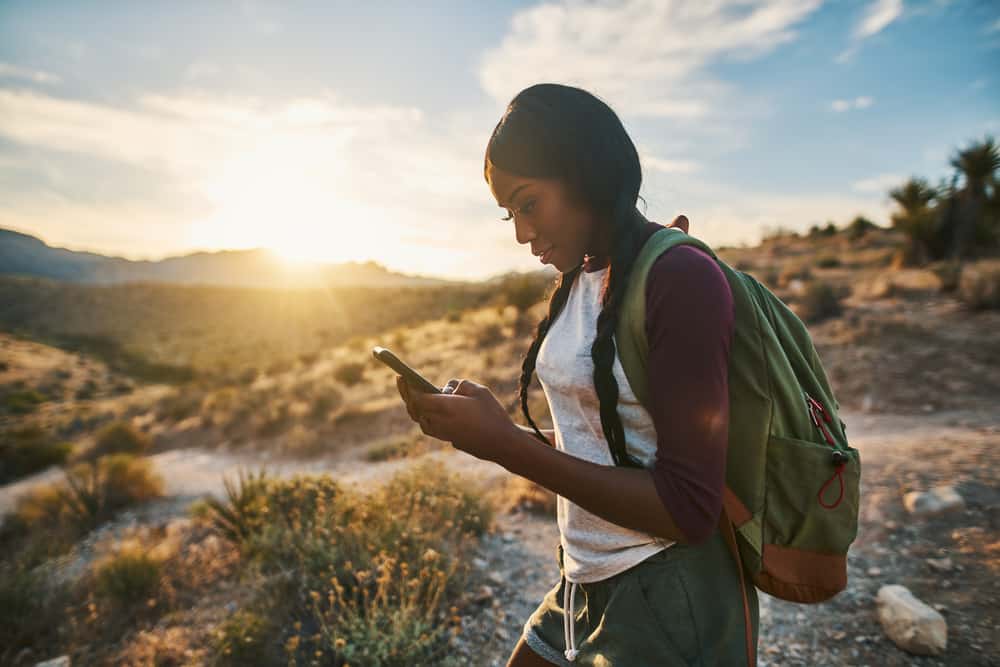
20. Bring something — anything — to contact others.
Before setting off, you should make sure that you have your phone at full charge. Do you still have a signal on your phone? Calling someone is the easiest way out of your predicament. Suppose you are going somewhere without phone service, you still want to bring your phone for several reasons. If you get lost and get to a place that does have service, you will be able to call. Another is that you can change the voicemail message on your phone if you do get lost, and this trick really can be a lifesaver.
Change the voicemail to say that you are lost and give your approximate location. That way, if someone tries to call you to see where you are, that person will get your message and know that you need help. If you are going somewhere without phone service, in addition to your phone, you also want to have some other way of contacting another person. That method may be through a radio or a tracking beacon. The beacon may not allow you to call someone, but once people are aware that you have not returned in a reasonable time frame, they will be able to locate you easily and make sure you are okay.
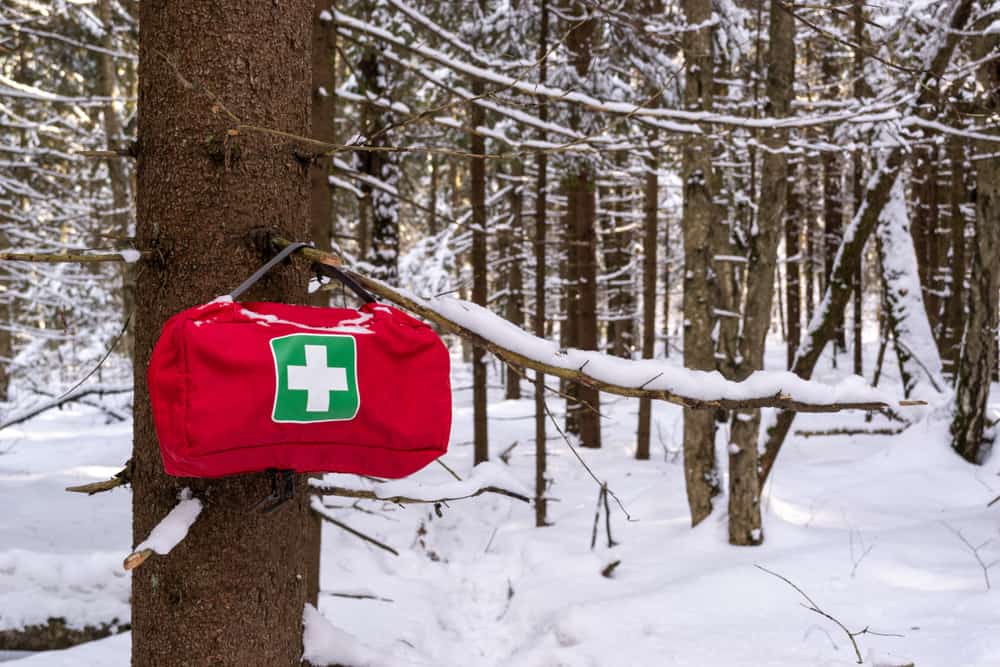
19. Don’t forget an emergency kit when you go camping or hiking.
When hiking, the goal is to travel as light as possible, not fill up your backpack with unnecessary junk. Nevertheless, an emergency kit is not superfluous, especially if you do it right. It won’t take up a lot of space or weigh you down. Include some basic first-aid supplies, such as bandages and antiseptic spray, if you or someone in your group gets injured. Having some small flares on hand can easily alert someone to your presence and deter bears and other animals from getting too close. You also want a flashlight and a blanket, just in case you get stuck outdoors overnight. The blanket does not need to be a thick fleece from a department store; a lightweight hiking blanket or sleeping bag will do perfectly. Also, bring a compass and a map; don’t rely on your phone’s GPS, which may not be entirely accurate and which can go out if you lose service.
You want to have some water on you constantly. That still is true if you are heading to an area with a pond or river. You may get lost on the way out or find that the water is undrinkable. Survival straws can also help, as these handy little gadgets can filter the water as you drink it directly from the source. Still, nothing is a replacement for a bottle or two on hand and ready to drink. Also, have some high-calorie, nutrient-dense snacks on hand, just in case you start getting hungry. You may be thinking that you will enjoy a nice fish dinner, but if you start getting fatigued from hunger on the way out, you may not get to your final destination.
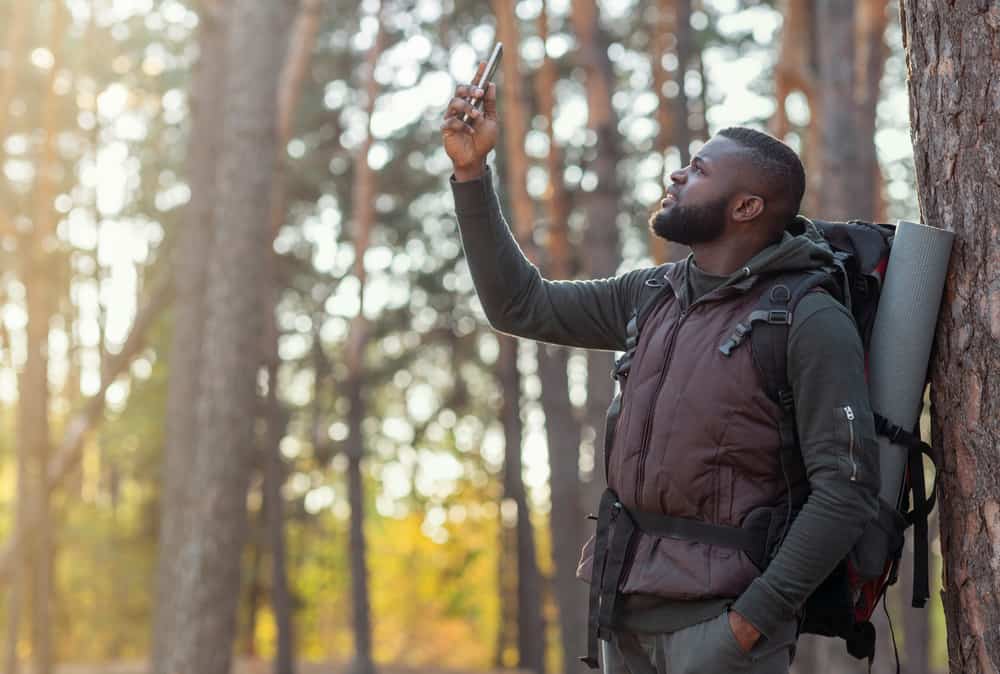
18. Take a deep breath and do not panic.
You have been coming out on this trail for years, but you do not recognize this particular area. The path should have led you out to a clearing by the lake, but where are you? When you first realize that you do not know where you are, the most important thing is not to panic. If you panic, your brain will short-circuit the ability to think, and you will automatically begin running around and wearing yourself out. Take a calm breath and tell yourself, “I do not know where I am, but I can get out of this situation.” Take some deep breaths.
If someone else in your group is the leader, let that person lead without having to worry about you going crazy. If you are the leader, make sure you set a good example and a calm tone for the others in your group. Once you regain your composure, help the others in your party regroup. Calmly say that you are not sure where you are, and ask if someone recognizes this area. If nobody does, remember that your job is to lead yourself and the others out of the situation, and you cannot do so if you get yourself worked up into a panic.
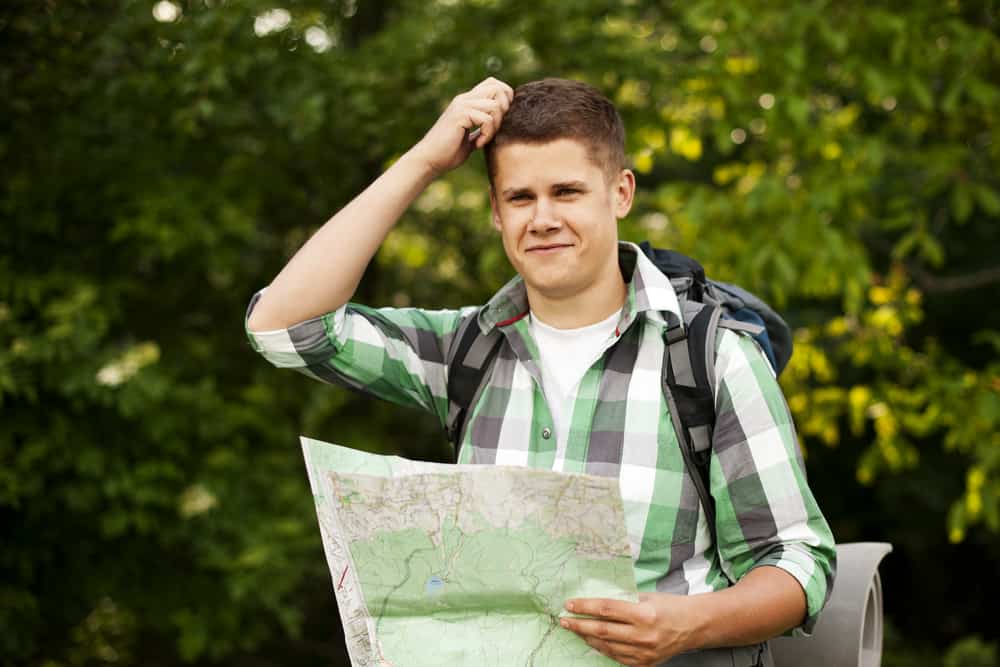
17. Observe your surroundings right away if you find yourself lost in the woods.
Once you have calmed yourself and your companions down, take a few minutes to observe your surroundings. What are some unique features about this location where you have now found yourselves? Maybe there are trees with specific markings, plants with vibrant flowers or berries, or rocks that stand out. Is there a trail here, or did you get off the track a while back? Make a mental note of these features and determine that this particular location is your ground zero. You will remain here until you have figured out a plan to get help or find where you are supposed to be. Let everyone know that you will be staying here for the time being and take some time to drop your backpacks and drink some water.
While you are in the process of closely observing everything around you, you may realize that you do recognize this place, after all. Can you figure out how to get back onto the trail from here? If so, great! Talk things over with the people you are with, if possible. Maybe one of them may be able to recall some distinct landmarks that you passed between the trail and your current location. Getting unlost is a group effort. Make sure you take the time to listen to everybody and consider their ideas. Does someone think they can lead the group back to the trail? Perhaps you should consider giving that person a shot.
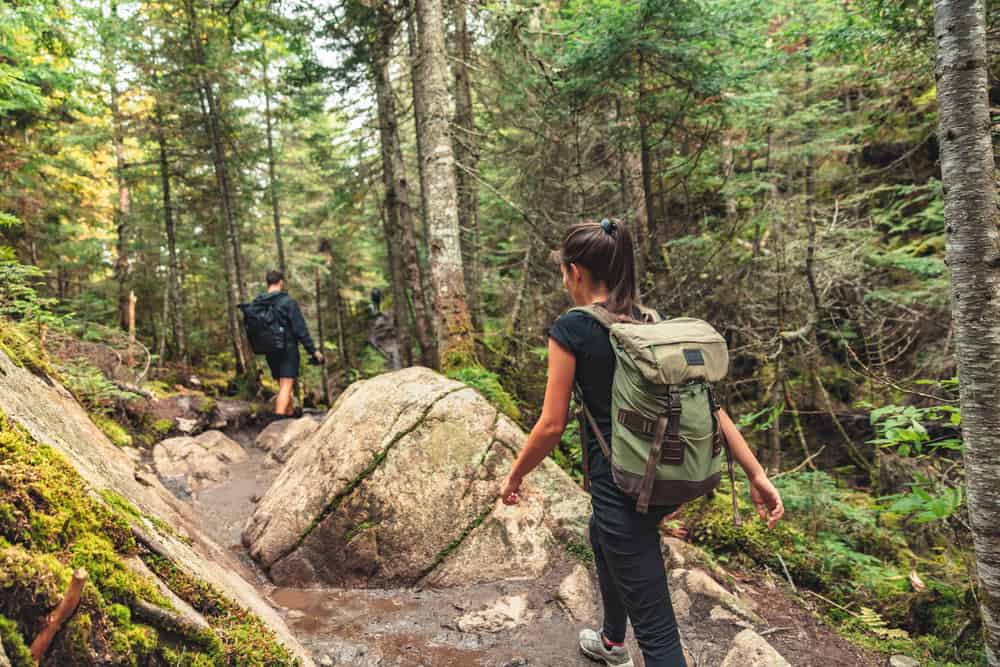
16. If you get lost while camping or hiking, look for familiar landmarks.
Are you on the trail, or did you get off the path? If you are on the course and you are not too tired, you may want to either keep walking until you see something that does look familiar. Or, you can go back the other way and see if you can work your way out of the woods. Keep in mind that trails are often marked with signage, especially at intersections, to let hikers know where and in which direction they are going. You may come across a sign not too far from where you are that alerts you to a more familiar place. In other words, if you are still on the trail, do not get off the path.
If you are off the trail, your goal needs to be to find the route so that you can either find someone who can help or find your way back to safety. Maybe you remember passing by a particular bush that stuck out to you or a tree that had an eagle nest in it. Look for those landmarks and see if they help guide you back to the trail. If you decide to get off the course, a trick to preventing this situation is to bring ribbons. Tie them periodically on a tree branch, especially whenever you turn, and make a mental note of which direction you went.
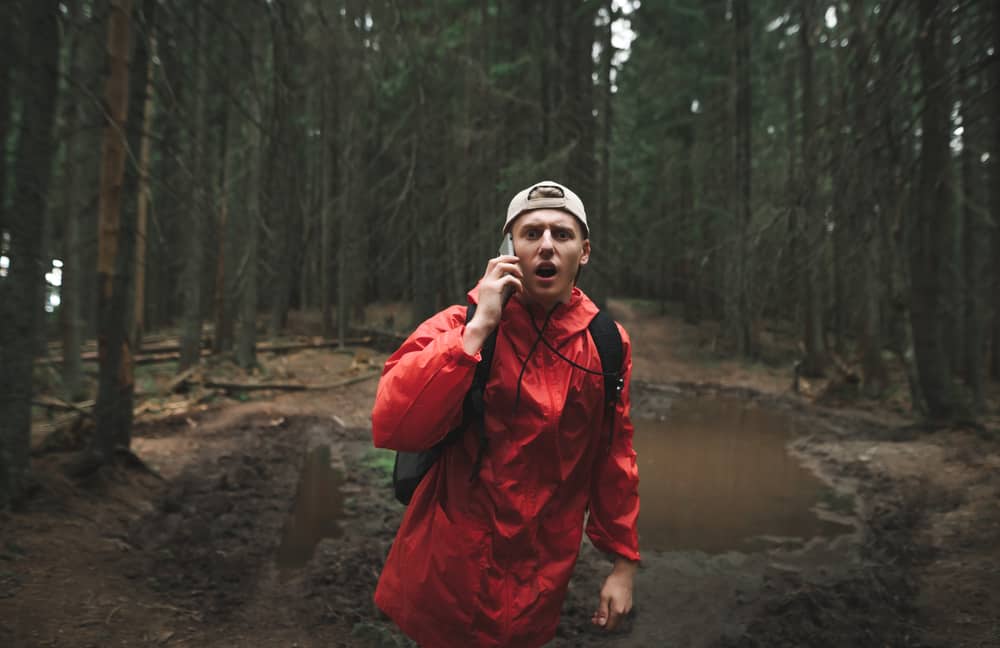
15. Try to contact someone immediately and continue to do so.
If you have phone service or a radio that allows you to contact the outside world, try to make contact and let someone know that you are not sure of where you are. Obviously, you cannot give your exact location, but even an approximate location can help. If you can, send that person a pin of where the phone says that you are, but don’t rely solely on that pin. Also, let that person know approximately how long since you realized you were lost, what familiar or unfamiliar landmarks are around you, and any other information that may help others locate you.
Be wary of relying on your phone’s GPS unless the trails are very, very well-established, as the GPS can be misguiding. Instead, trust your own ingenuity and that of the people you are with. Remember that you are not the first person to have ever gotten lost in the woods, and plenty of people regularly get out of the same situation more or less intact. The trick is to remain calm, pay attention to your surroundings, and cooperate with the people in your group. With that in mind, GPS can help but understand that its locations are, at best, approximate. Combine the GPS with your own instincts, and you will have a better chance of getting out in one piece.
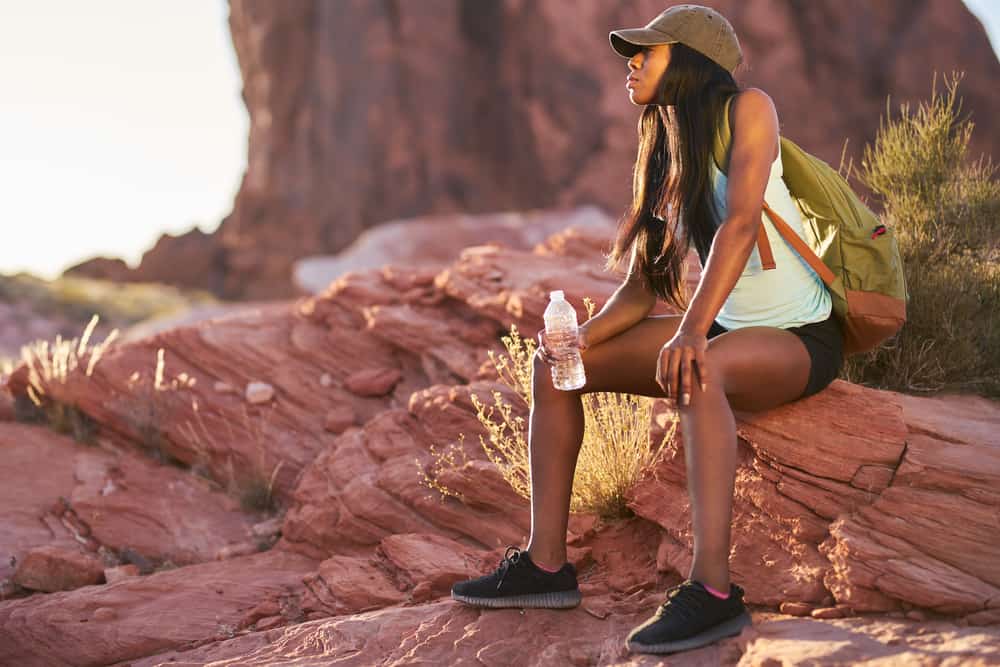
14. Tired? Rest if you need to while lost in the woods.
If you find yourself lost in the woods, try not to get anxious. Why? Because if you get worked up about not finding your way out, you will run yourself ragged. You will want to keep going until you are completely exhausted. Perhaps you remember a scene like that in the movies when people are running for their lives. But remember that you are not in a film. Pushing yourself to the point of exhaustion will hurt you more than anything. You will be unable to think clearly. Nothing could be more important than having a clear mind when trying to get un-lost.
Sit down on a rock and let yourself recover for a few minutes. Take a sip of water because staying hydrated is critically important. Also, you may not notice that you have an injury if you have been going for a long time. Instead, take some time to rest whenever you start to feel tired. Lift your pant legs and see if any thorns have scratched you, and take a minute to use some antiseptic spray and bandages. Fixing minor problems when small, such as tiredness and lesser scratches, can prevent them from becoming big problems a few hours later.
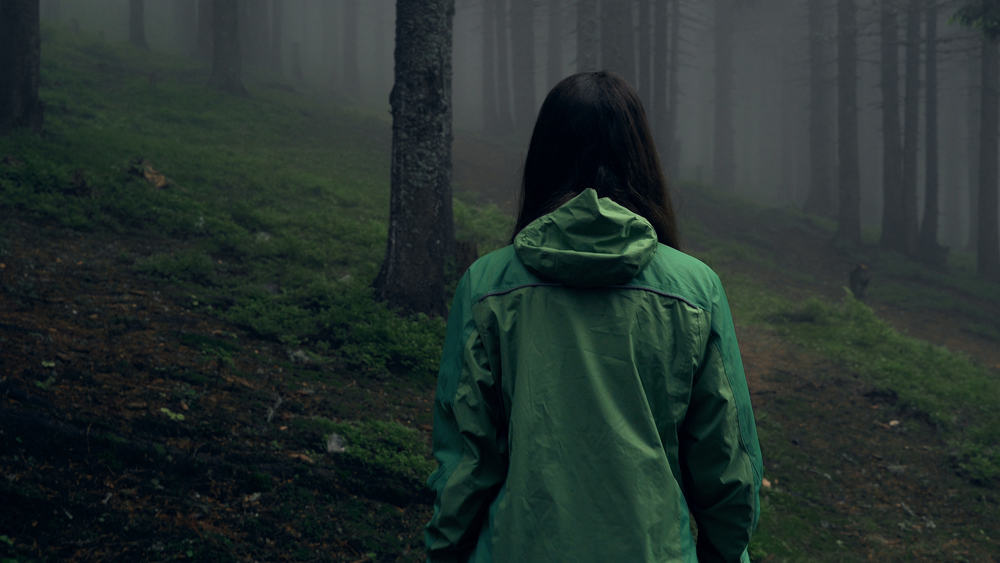
13. If nightfall is approaching, stay in place.
If the sun is getting low, your only thought might be getting out of the woods before nightfall closes in. After all, what could be scarier than being stuck in the woods overnight? There is no telling what animals may be lurking nearby, and you will not even be able to see them. If you fall asleep, you may not even hear them coming until too late. However, the most important thing that you can do as nightfall approaches is to stay in place. Find a safe place where you and your companions can stop and plan how to spend the night.
You should have packed matches in your emergency kit, so start gathering wood to build a fire. Don’t try to go about chopping down a tree, even if you have an ax, because you will drive yourself to the point of exhaustion. Instead, look for dry, dead branches. Having a fire will help everyone get warm and feel safer, as the flame will help keep wildlife away. You may want to have one person keeping watch while others sleep and take turns throughout the night. That person should tend the fire and also be on the alert for suspicious noises.
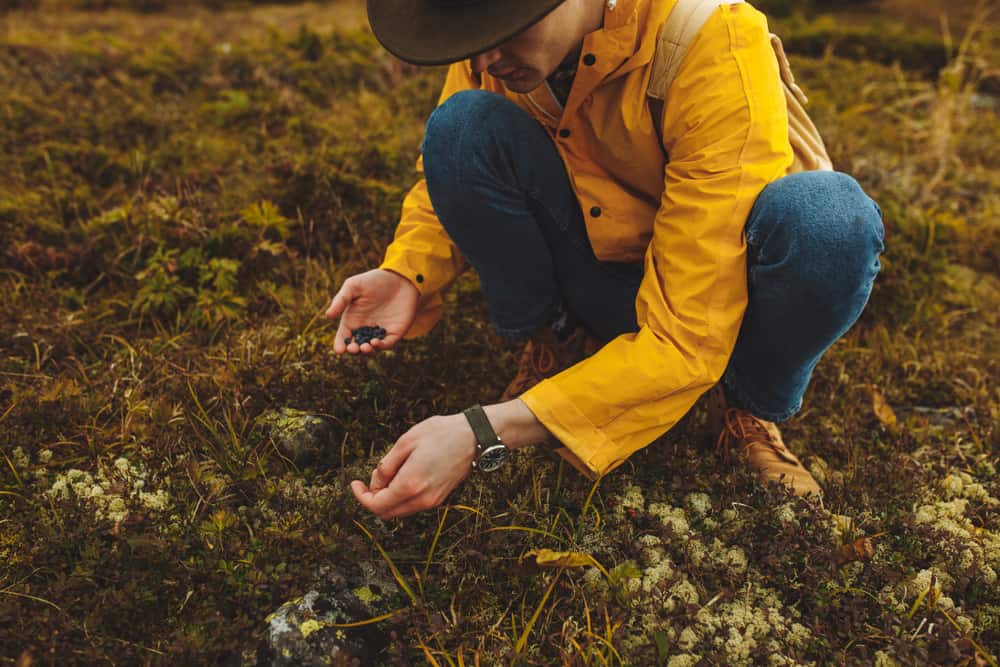
12. Rest for 30 minutes to eat.
You may think you will take the time to eat once you are out of this dire situation, but not eating is the worst choice you could make if you are lost. Your body needs extra calories to keep hiking, especially as you become tired, to avoid exhaustion and fatigue. Okay, the next best thing, eat and keep going. No, bad idea, because your body cannot digest food while engaging in strenuous exercise. Instead, stop for 30 minutes to eat. Wait, 30 minutes? However, you can eat an entire meal in less than five! Great, but your body needs to begin digesting the food to use the calories and nutrients.
When you stop to eat, take a few minutes to slow yourself down before you begin eating. After all, you don’t want the food to come back up if you have only a finite amount. Drink some water, but sip it instead of gulping. Then begin eating slowly so that your body can absorb the maximum amount of nutrients from the food. After you finish eating, if you are still tired, continue resting. Remember that staying in place is better than getting even more lost or sliding into exhaustion. If necessary, take a nap. Wait until you are ready to keep going, with a clear plan, instead of just powering on while wandering.
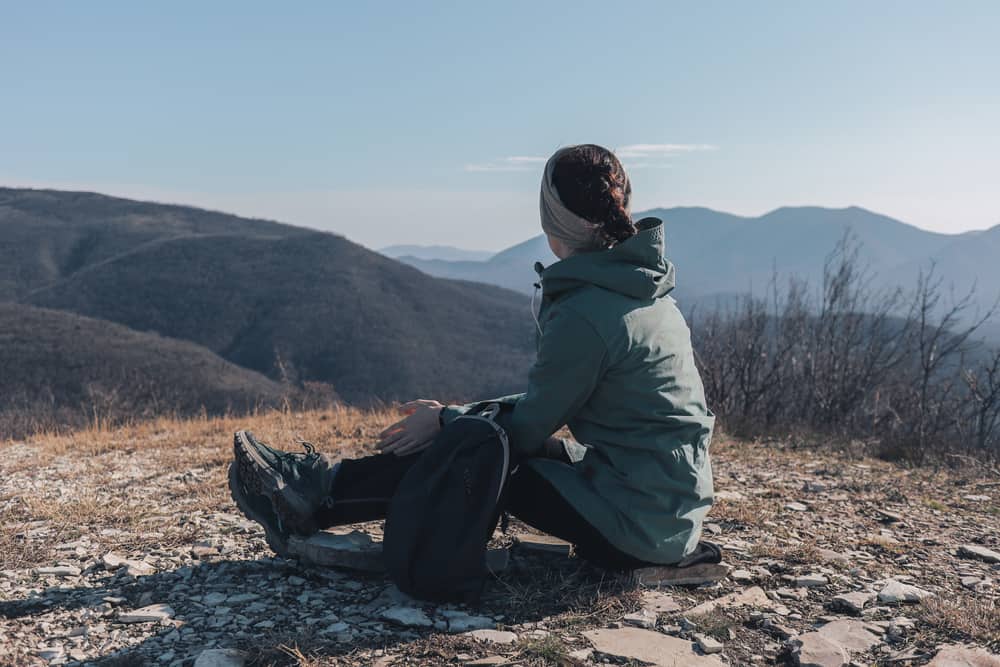
11. Stay in the same spot if you aren’t sure where you are in the woods.
Have you been gone for more than a few hours, and someone back at home knows that you were supposed to have been back by now? You can be reasonably sure that help is on the way. The last thing that you want to do is send the people looking for you on a wild goose chase. Especially when it was because you kept running around in circles, wearing yourself out. Instead, find a safe place and stay there. A secure site is some kind of clearing that has no signs of large and dangerous animals nearby. Hopefully, your current location is similar, where you can remain for the next 12 hours.
If you remember back to being a kid going to the store with your parents, what were you supposed to do if you got lost and couldn’t find your mom or dad? In all likelihood, you were to stay put and wait for them to see you. If you went wandering all over the store looking for them, they would have had a much harder time tracking you down. In the meantime, you would have worked yourself up into hysterics and been completely exhausted. Same principle if you find yourself lost in the woods. Stay in the same place so that those trying to find you can have an easier time.
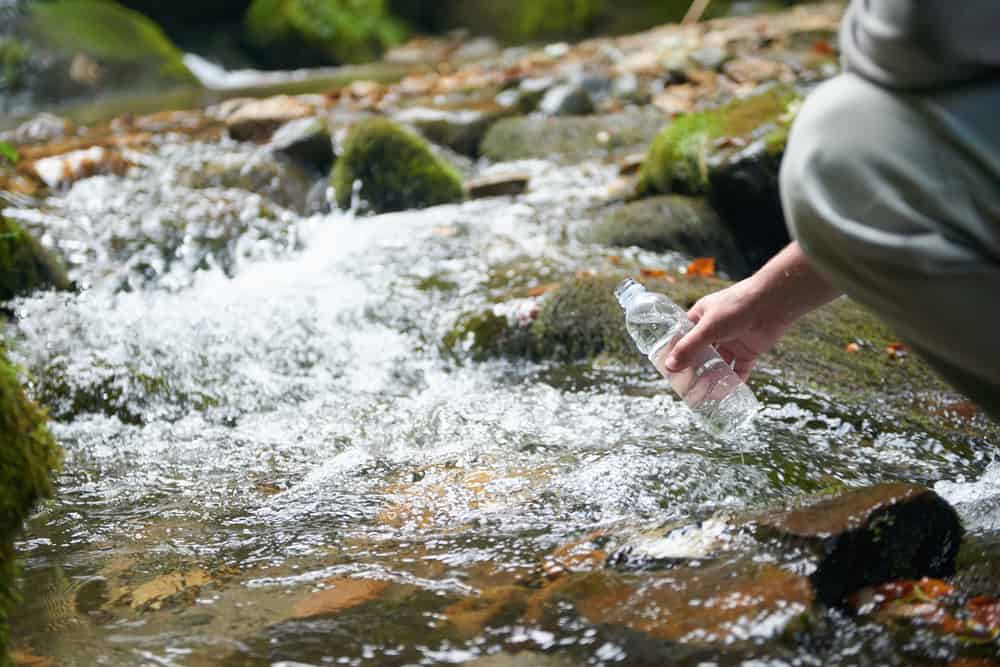
10. Stay hydrated with fresh running water or a survival straw.
You realize that you are lost and won’t be making it out of the woods before sunset. What do you do? Your first thought may be to develop a shelter that will protect you from the wind and the rain. Also, you probably consider that you should find a place to forage for food. Yes, food and shelter are undoubtedly important. Why? Because you really can die from exposure, especially if a storm hits. However, nothing is more important than water. Stay hydrated! Humans can survive for up to three weeks without food, but they will die of thirst after only three days.
The odds are that if you have already been out for more than a few hours, you have gone through the water supply that you brought with you. The best water source out in nature is running water because the nasties that will make you sick, like animal droppings, mold, and decaying fish, will not be able to build up. Keep your ears open for a nearby stream or waterfall, and head there. Ensure that you are keeping yourself dry when you are getting the water because wet clothes can lead to hypothermia. If you cannot find a source of running water, use a survival straw for drinking water from a lake.
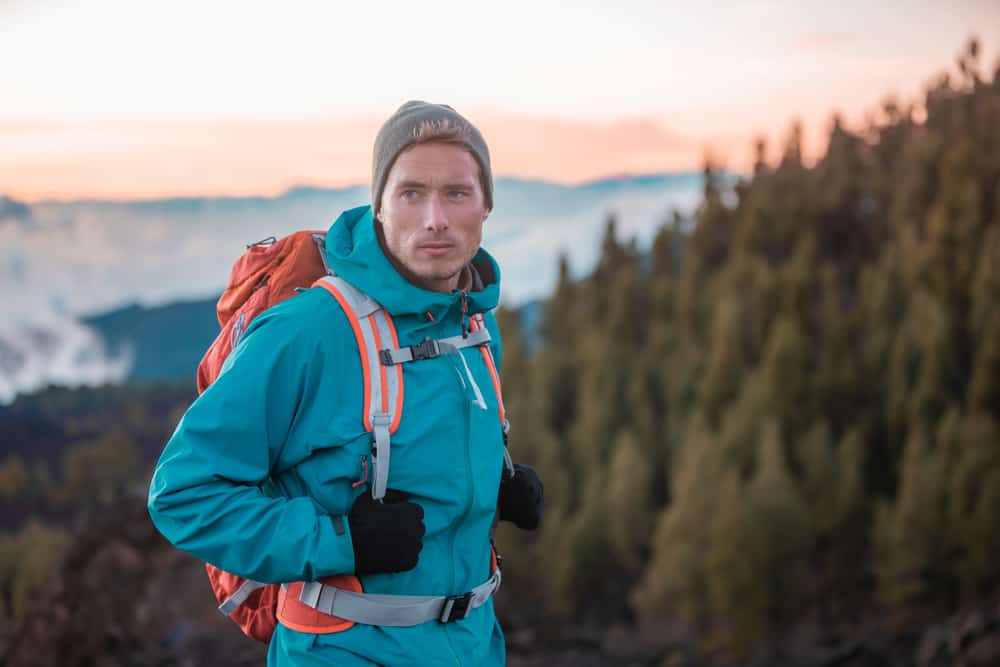
9. Layer up when you go hiking or camping — just in case.
Your chances of getting through an unplanned night out in the great outdoors are much higher if you stay warm. You should wear layers on your hike! Start layering up before you lay down for the night. Now is also an excellent time to change socks. Why? Because your feet may have gotten wet without you even realizing what happened. Are the socks on your feet are damp? Hopefully, there is a place to lay them out to dry. If you are near a stream of clear water, wash your socks in the stream so that you can put on dry, clean socks in the morning.
You will also want to build a fire to help you say warm, but make sure to do so safely because you do not want to add a forest fire to your list of present woes. In addition to the flame helping you stay warm, you can cook any small animals or fish over the fire. A bonus is that the smoke from the fire will send a signal to anyone looking for you. Ensure that someone is tending the fire for as long as it is burning. Furthermore, be careful not to breathe in too much smoke.
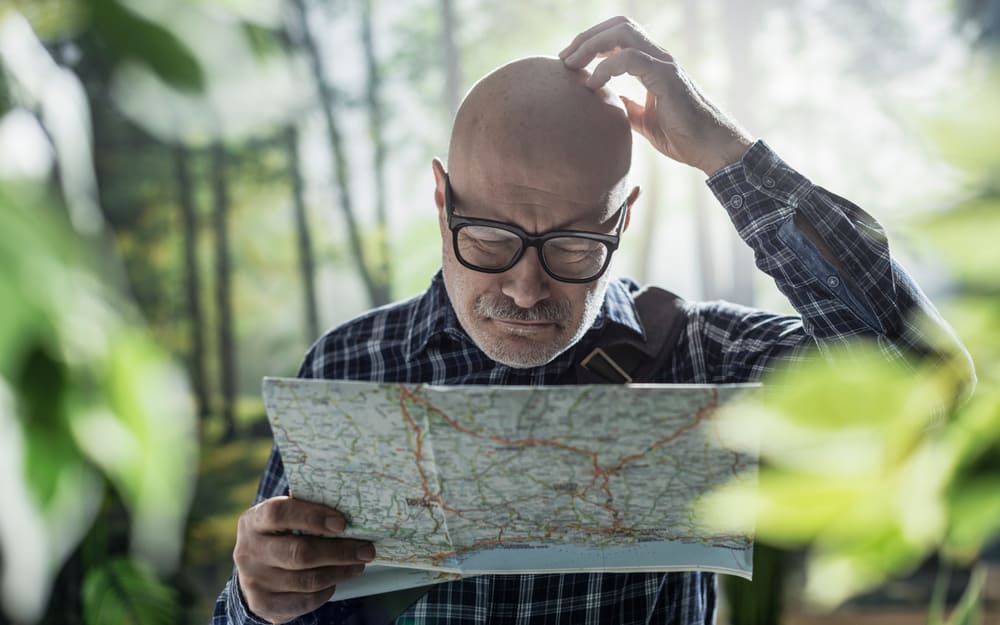
8. Prepare your mind for this journey.
The biggest struggle you will face if you wander off into woods is not the fight to stay warm, hydrated, and fed. It might be the fight against your own worst fears. We, humans, are social creatures and are driven by the need to survive. If you get lost in the woods, you are, by definition, away from the protection of society. That goes for the individuals who were hiking or camping with you unless you wandered off alone. As such, you are facing one of the greatest threats to survival in the history of humankind, which is the struggle to stay alive when you are pretty much on your own.
One way to win the mental struggle is to tell yourself some mantras and keep repeating them. One might be, “I am lost right now, but I will not be lost forever.” Some other examples are, “Someone is looking for me.” Tell yourself, “I am strong and can get through this.” When the urge to panic sets in, refuse to give in. Take deep, calming breaths and force yourself to focus on something positive. Remember that you may be just one hour away from finding your way to the trail or being found by the people looking for you. The difference in how you get to the other side is all in your mental state, so make sure that positive thoughts are a priority.
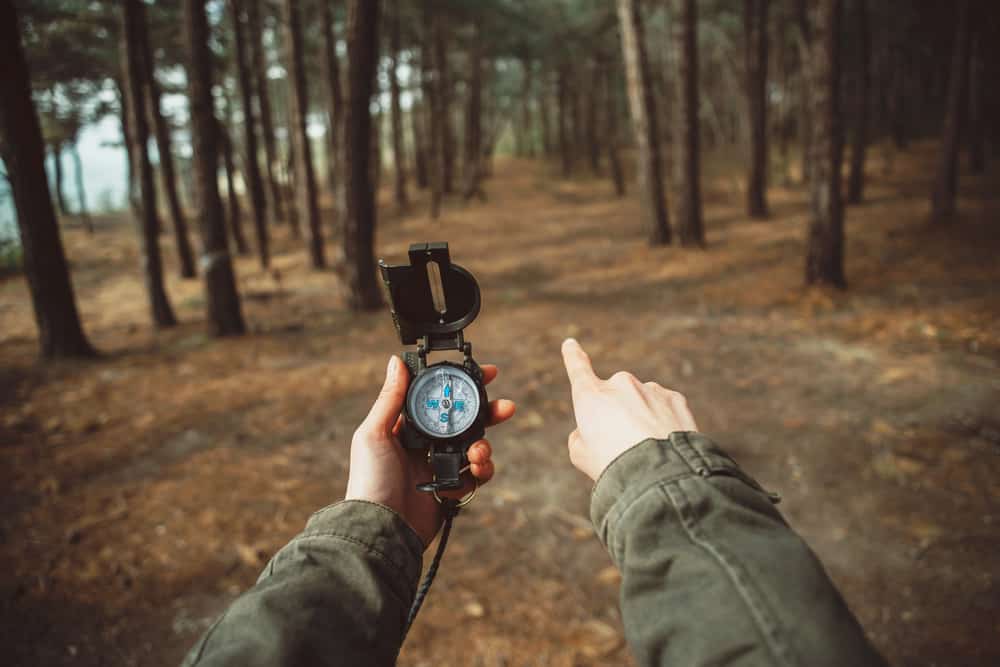
7. Stay calm and consider the survival skills you already learned earlier in life.
If you were in Boy Scouts or Girl Scouts when you were younger, odds are you learned some essential survival skills. If you ever went through Basic Training for the military, then you definitely learned some survival skills. Maybe your training is limited to what your family members taught you when you were younger. Whatever the case may be, use all of the survival skills you know to take care of yourself while waiting to be rescued. Those survival skills may include making a fishing line without needing a hook, building a fire, using a pocketknife, or using a compass.
Don’t blank out on these all-important skills at precisely the time when you need them the most. Take some time to sit down and ask yourself what your father, grandfather, Scout leader, et cetera would have done in this particular situation. Recalling the influential individuals in your life who taught you to love the outdoors can be much more helpful than trying to wrack your brain for the basics on how to tie a knot. Also, get input from the people you are out in the woods with because they may have learned some skills they can recall.
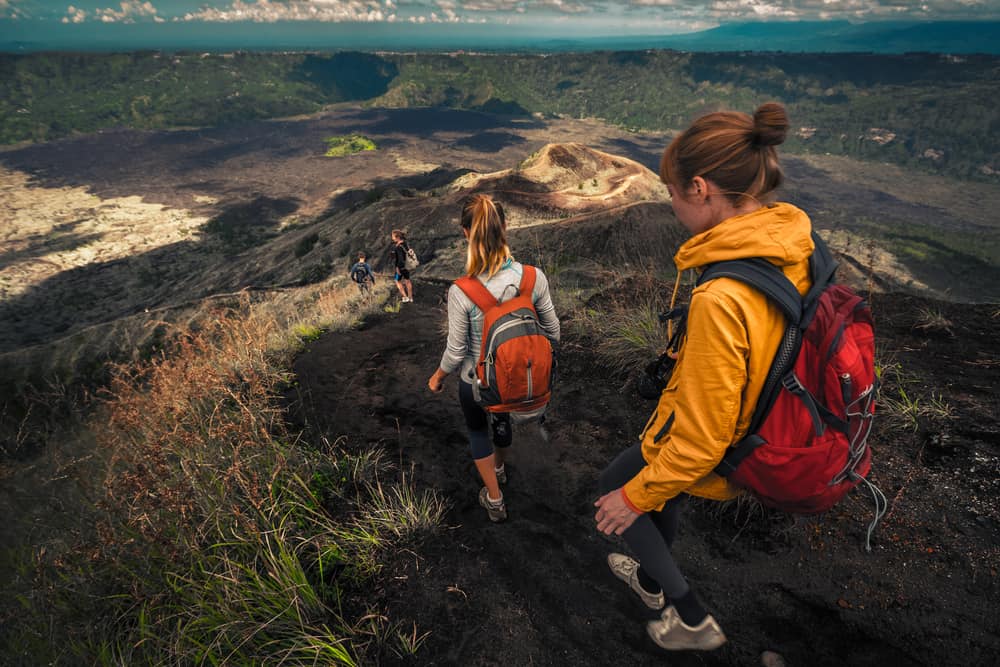
6. If you find yourself lost in the woods, travel downhill.
One last resort that you can take to get yourself unlost is to head downhill, following a stream if possible. Trails and roads tend to be present downhill, so you are more likely to find someone to help you. But this tactic is very dangerous, especially if you are already lost and do not know the area, so only use it as a last resort. If you are at a higher elevation and can see a good ways off, check the view from different angles to see if you can locate a trail, a road, or maybe a campfire. Any indication that someone else may be nearby will help you know which way to go.
When you are heading downhill, be careful that you are not just following animal trails. Animals are not necessarily running where you are trying to get to; more often than not, they try to stay away from people! Following animal trails may lead to a confrontation with wildlife, and they will have the advantage because you will be on their territory. Also, be careful of what may look like a trail but hasn’t been groomed for several years and does not show signs of travel. That trail may be helpful, but forest growth changes constantly, so you may end up where you do not want to be.
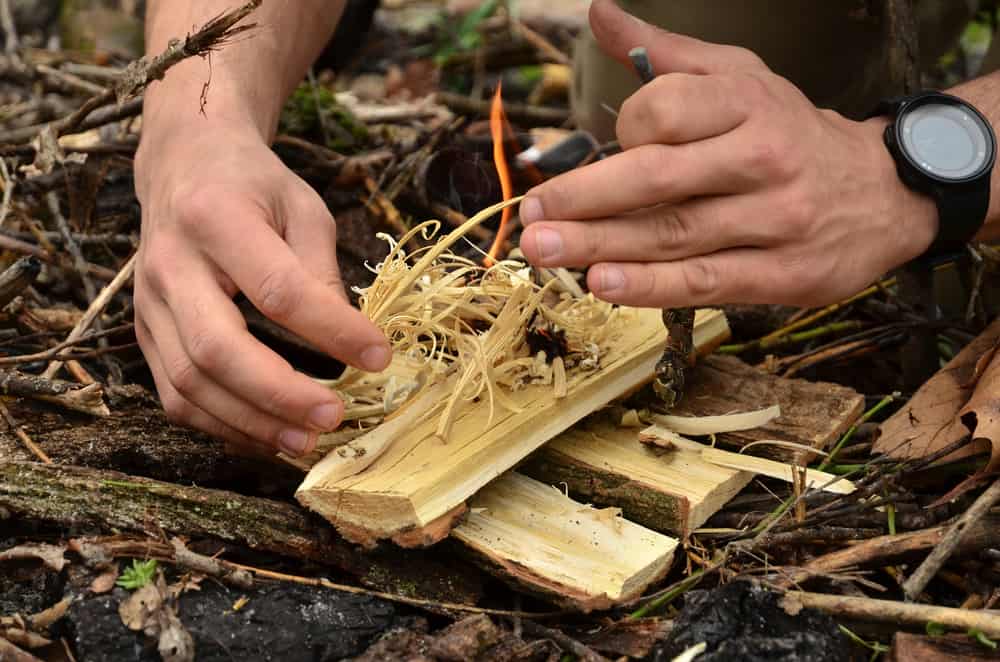
5. Gain knowledge about survival skills — before you need to use them!
Humans are immensely social beings, and we rely on the people around us for protection. Think about the community in which you live. You rely on the people at the grocery store to make sure that you can purchase food when you need to. Again, you rely on the car mechanics to ensure that what you are driving is safe. You don’t worry about breaking down suddenly. Also, you depend on the plumber to do a good job. You don’t think your home will flood and the toilet water will destroy all of your belongings. Even in civilization, we rely on other people for protection.
When our nomadic, hunter-gatherer ancestors were living in the wild every day, they had to rely on each other for protection from wild animals, as well as from things like inadvertently eating poisonous plants. They all honed their survival skills together and helped each other in difficult situations. Many people today think that survival skills come naturally, but the opposite is true. Survival skills come by learning them from other people because we are social beings. Don’t assume that if you get lost, you will instinctively know what to do. Take the time to learn before you start venturing off into the woods.
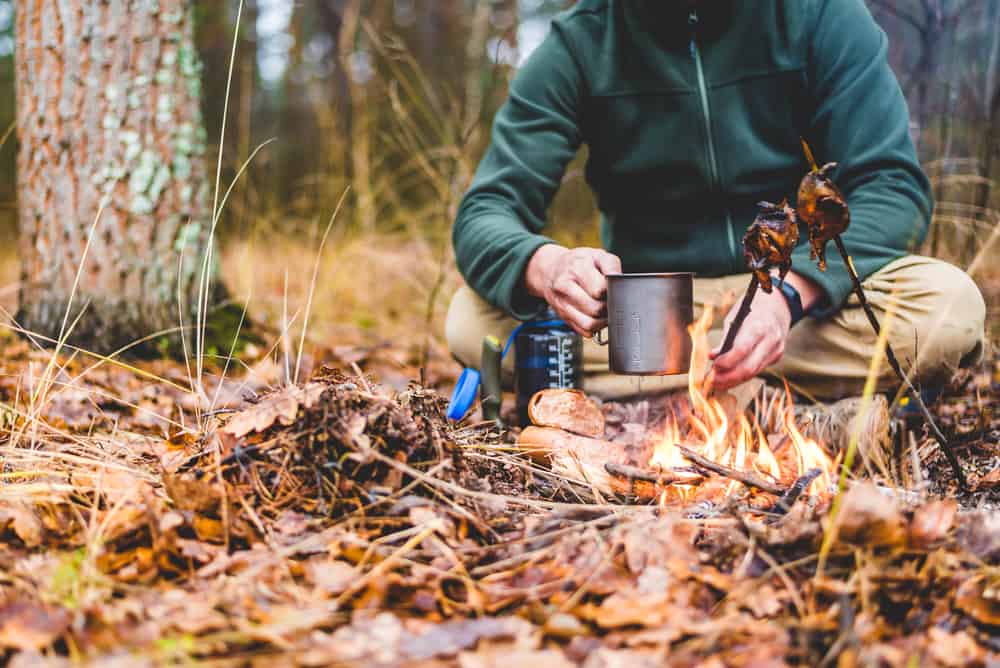
4. Practice important survival skills to avoid getting lost in the first place.
Nobody plans to get lost. Even the most well-prepared and experienced hikers can find this horrifying situation happening to them. However, many people who get lost should not have been out on their own in the first place. They lack wilderness training beyond what they may have learned from shows on National Geographic and set out on their own without an experienced guide or another companion. You cannot learn survival skills from reality television shows; those have to be taught either in wilderness classes or from someone who has extensive experience in the outdoors. Likewise, reading books about survival skills does not make you a survivalist. Practicing survival skills with someone who has used them is what you need to do.
That said, do not be one of the people who watch documentaries and read books, then decide that they are ready to hike the Appalachian Trail on their own. Suppose you are not an experienced hiker. Always go out with someone who is. If you are uncertain about the trail you are heading to, don’t be afraid to ask questions. You can talk to the local forest rangers, who are much happier to answer questions beforehand and make sure hikers are prepared than have to launch a rescue mission. Check weather forecasts. If a storm is in the forecast, you may want to stay in.

3. Learn to forage for food while camping and hiking.
Have you ever watched a survivalist television show? You probably know that one crucial survival skill is the ability to procure food from the woods. While you may have packed enough food to last you through your hike, if you do end up getting lost, you will need to obtain calories and nutrients. How? You will get them from the plant and animal life around you. Taking classes or learning from an experienced person beforehand can help you determine what plants are safe to eat. You can learn whether or not you should cook them first. It is vital to discover how to hunt when you may not have a gun.
If you ever get lost in the woods, that is the worst time to try to become an expert on the wilderness. Don’t pretend like you know what plants you can and cannot eat. At best, you will end up with a really bad bellyache; at worst, you may end up with a life-threatening medical emergency. Of course, it will be at exactly the time when there is no help to be found. If you get lost and experience foraging for food, you will be much more prepared to get through the trying hours and possibly days ahead. You may not be eating at a full-service buffet. Yet, until you get back home, you may not starve.
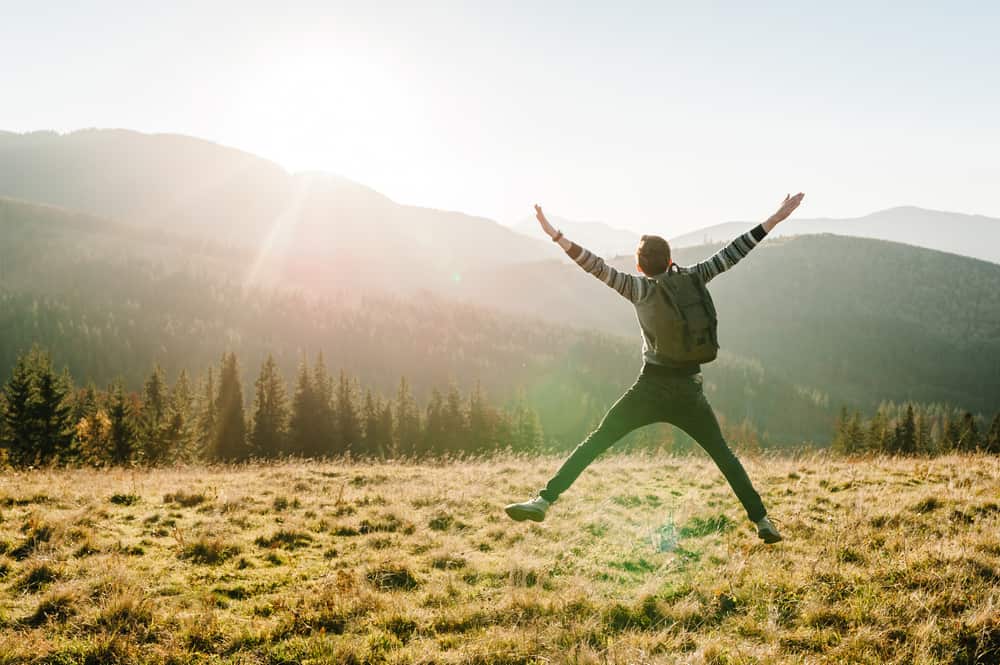
2. Look for open country.
Are you worried about hiking through a wooded area and getting lost? One crucial thing that you need to do is try to get into an open space. Open country is much safer for building fires. Plus, it has fewer hiding places for wild animals to secret themselves to. You will also have a much better chance of being seen by others who may be looking for you. Small planes flying low overhead may spot you. Please, get prepared with a signal to let them know that you need help. You could gather rocks and make a giant SOS with them or some other phrase, such as help. You could also hold up a mirror or other shiny object to make a significant glare. If you have flares and it is dark, you can shoot them off.
Open country by a water source is the absolute best place to be. Just make sure that you stay at least 200 feet away from the water at nighttime. Why? Because nocturnal animals are likely to stop by for a drink. Also, some rivers are prone to change course very quickly. Therefore, you want to be far enough away that you won’t get swept away in the middle of the night. If you follow the stream along open country, you may find a trail. Hopefully, it can take you to where other people are also hiking. A bonus is that if your phone still has a charge and you find open country, you are more likely to get a signal.
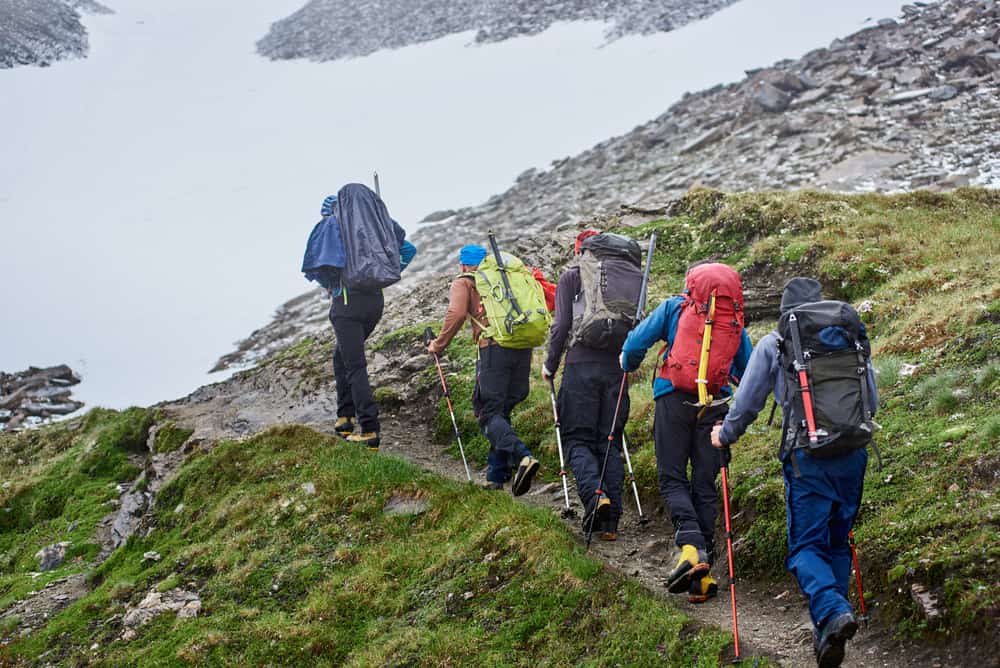
1. Stick to the trails.
One of the best things that you can do to prevent getting lost in the first place is to stick to the trails. You may accidentally end up off-trail. However, if you go hiking in an area that has a pretty well-established trail system, you should be able to find the trail within a reasonable amount of time. You can still get lost on a trail system. Nevertheless, you will be much less lost than if you go out on your own away from the trails. Trails tend to be well-marked with signage indicating which way to get to a particular location. Therefore, even if you do get lost, you should find a sign that will help you out within an hour or less.
If you decide to take an off-trail hike, make sure that you go with a well-experienced person. Stick to open country rather than wooded areas. Furthermore, aim for a location that has good visibility. That way, you can see where trails and roads are. Be extra prepared with a compass, first-aid kit, extra clothes, extra food, and anything else you may need should things go south. Preventing yourself from getting lost in the first place is worth more than all of the survival skills in the world. Make sure that you take the necessary precautions to be safe and know where you are.
